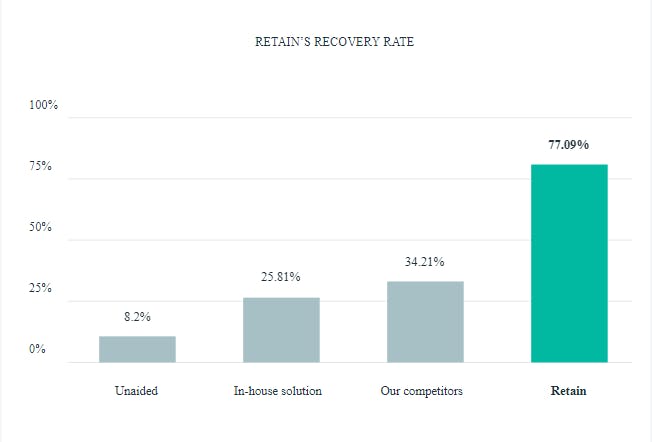The subscription business model has seen an immense rise in popularity in recent years, and with good reason. The subscription-based economy grew 350% between 2012 and 2019, and subscription businesses grew revenues about five times faster than S&P 500 company revenues during that time.
Companies selling physical goods, digital products, and services of all kinds have turned to this business model as a way to secure repeat customers. But how can these businesses convert customers for the long-term? And how does subscription marketing differ from marketing for a more conventional selling model?
What is subscription marketing?
Subscription marketing refers to marketing goods and services to customers on an ongoing basis. This involves a different approach to marketing, as the goal is to acquire customers and retain them long-term for repeat purchases.
Businesses offering subscriptions need to experiment with different features and offerings, gather actionable user data, and make adjustments in order to optimize their process.
In short, there’s a lot to it. However, if customers respond well to a subscription offering, their repeat business will generate reliable revenue for the foreseeable future.
Why do consumers opt for subscriptions?
While the advantages to the business are quite clear, this model also benefits the customer in a number of different ways. In a world where customers can choose from a huge variety of products, the subscription business model solves a number of pain points.
Savings
A major benefit to consumers is the savings subscriptions can offer. Businesses will often sell subscriptions at a discounted price, making it cheaper to buy products via subscription than buying in the store. Birchbox, for example, sells beauty products via subscription for less than it would cost to buy in the store.
While subscription marketers should offer discounts sparingly, according to our research, offering lower prices is a great way to get new customers to try out a subscription offering. After all, who doesn’t like to save money?
Convenience
Convenience is a huge appeal for this business model. Consumers today can go shopping for groceries, upgrade their entire wardrobe, and access the latest digital entertainment all without leaving their house. Let’s take Netflix as an example. Netflix became the subscription powerhouse we all love because online streaming and home shipping were far more convenient than going to your local Blockbuster.
That level of convenience has become the norm, and younger generations, in particular, have come to expect it. Research shows that millennials are 35% more likely to have a subscription for shaving products, 28% more likely to have a subscription for beauty products, and 24% more likely to have a meal kit subscription. In a fast-paced online economy, product offerings that make things quick and simple for customers are successful.
Replenishment
Customers often buy subscriptions simply because they regularly need to replenish a product or service. This applies to digital and physical products alike. Toiletries and groceries are good candidates for subscriptions.
This is evidenced in the popularity of Dollar Shave Club and other popular subscription services. Dollar Shave Club used subscription marketing techniques to gain a massive customer base, resulting in a billion-dollar acquisition by Unilever in 2016. The company’s success inspired other companies to follow suit, including household brand-name Gillette.
Of course, frequently used services can also be sold through subscriptions. Amazon, for example, offers faster shipping times and other benefits to Amazon Prime subscribers, with subscription revenues netting the company $19.21 billion in 2019.
6 tactics to market your subscriptions
We can see that subscriptions are a great way to cultivate a loyal group of repeat customers, but the challenge lies in acquiring them. How can you make your subscription offering stand out from the rest?
1. Offer as a freemium or a free trial
Offer customers a way to try a version of your product for free. Freemium offerings come with their own pitfalls that must be navigated, but a good offering will make your customer excited to try out the premium version and land you a sale.
If you’re offering a freemium version, the main thing to remember is that this subscription marketing tactic is for acquisition only — not revenue. So, it’s best used as part of a wider strategy that nets sales further down the line.
While some may find offering free goods and services to be counterintuitive, it works when done right. Freemium has helped spur the growth of many major companies, like Mailchimp and Wistia, by generating interest and use among future customers.
2. Set up mailing lists
If you don’t already have one, try setting up a mailing list. You can segment lists and send new visitors offers and discounts on their entry subscription, and, like freemium, this can help attract your soon-to-be-customers and get them using your products.
This subscription marketing practice allows for direct communication about your offers with potential clients, curating their interest over time. A well-known example of a successful email list is BarkBox, which takes a creative approach to subscription marketing using mailing lists.
3. Work with influencers
Influencers are highly trusted by their followers, and that makes them a very valuable resource for subscription marketers. You can, and should, leverage influencers to reach potential customers, send them deals, and wow them with your products. This is a tried-and-tested method in subscription marketing and traditional marketing alike, as 75% of companies use influencer marketing to reach potential customers.
Here’s an example we like — FabFitFun used influencers to market their subscription services, resulting in an incredible 300% annual growth.
4. Produce content
Great content brings in customers in every industry, and subscription services are no different. Content is a key acquisition channel you can leverage to your benefit. Use content marketing strategies to attract customers and reduce existing customer churn for your subscription services.
Mailchimp is a great example of this practice. Mailchimp leverages content marketing by offering useful tips, tutorials, updates, and other information in blog posts, regularly engaging readers. The company’s prodigious production rate of quality content provides plenty of material to attract and educate potential customers.
5. Focus on differentiation
One of the ways to carve out a section of the market is through differentiation. For example, while Netflix and Hulu both offer TV and movie streaming to their subscription customers, their services are sufficiently differentiated to allow them to target different customer segments.
Netflix offers a wider selection of movies and TV shows, as well as offering an ad-free experience. However, apart from original content and some other exceptions, Netflix content is typically older, while Hulu offers current TV shows to their customers. Differentiating your offering from competing offerings will establish your brand and help you stand out from the crowd.
6. Show that your product works
Here’s an example of a working product — our churn reduction software boasts an average 37x ROI. ProfitWell is designed to reduce churn and increase profits for your subscription business via advanced analytics. With endorsements from major companies like Canva, Skillshare, and MasterClass, our customers can see for themselves that ProfitWell is effective.
A best practice is to ensure that customers immediately understand the benefits of your subscription offering. Research shows that customers can make a lasting decision about a brand in under three seconds after visiting a website. Use that window to educate them on why your product offering rocks, and why it’s worth subscribing to.
Challenges to subscription marketing
Retention
It’s vital that you establish long-term customers for your subscription offering, and there are some common pitfalls when it comes to customer retention using this marketing method. One issue is that discounts can draw in new customers and fail to retain them. If subscriptions aren’t automatically renewed, drop-off rates may be higher than otherwise.
Poor customer service and customer success tracking result in churn, as customers of subscription services need to be consistently nurtured and handled with care. The traditional marketing funnel does not apply in subscription marketing as much as it does in traditional marketing — here, the true challenge comes after the first sale.
Credit Card Failure
False credit card decline can happen for many reasons, and it poses a major problem for digital merchants. 15% of credit card owners experience a declined transaction at some point, affecting an estimated $331 billion in attempted sales in 2018 in the U.S. alone.
Our research shows that 70% of customers will give up after a failed transaction, and, that overall, 40% of churn is due to a failed payment of some kind. When adopting subscription marketing techniques to sell your products, put a strategy in place to help offset the issue of credit card decline among potential customers.
Analytics
Subscription marketing is data-driven and involves a degree of experimentation. You need to track the behavior of subscription customers and their responses to changes in price and product. Lifetime customer value, for example, will identify which customers should be targeted over others.
Sometimes there is an optimal season to market certain goods and services, and analytics can help you with demand forecasting and optimize your subscription marketing. Without information on customer behavior, you’re having a one-sided conversation with your customers, and this is ineffective with subscription marketing in particular.
Pricing
Many companies don’t know how to price in a sustainable way, and this feeds into several of the other challenges we’ve mentioned. Take the example of discounts. As we know, discounts can be valuable in some cases, but they can also discourage repeat subscribers — finding the sweet spot for how much of a discount to offer is a matter of using analytics and pricing strategy to improve customer retention.
These challenges are interconnected, and your approach to subscription marketing should thus be a holistic one. This can seem complicated, but it’s really just as simple as having the right tools for the job at hand.
Keep your customers with Paddle
Paddle Retain helps reduce churn, increase retention, and boost profits. Our software is designed to combat credit card failure, with a recovery rate of over 77% for declined transactions. As you can see in the above image, this is far beyond the capabilities of our competitors.
Tracking customer success and offering quality customer service improve retention. Customer success results in lower customer acquisition costs for subscription businesses as well as lower churn and happier customers. At ProfitWell, customer success tracking is a major focus of ours, and our software is designed to connect you with your customers and ensure they find success with your products.

Price Intelligently allows you to optimize your pricing strategy and differentiate by appealing to key personas. Remember our problem with discounting? We’ve learned that while the majority of customers believe a 25% discount is appropriate, willingness to renew a subscription erodes for customers with discounts more than 30%. There, wasn’t that useful?
Finally, subscription analytics allows you to monitor customer behavior and gain valuable insights into your customer base. As a subscription marketer, you need to have this kind of data to succeed, and ProfitWell actually offers free metrics to help businesses do exactly that.
The long haul: Use subscription marketing to nurture repeat customers
Subscription marketing is constantly evolving, and it’s important that you stay on top of what your customers want and how they’re reacting to your offerings. However, by staying in touch with customer behavior and working to acquire and retain valuable customers, you can launch a highly successful subscription marketing offering.



